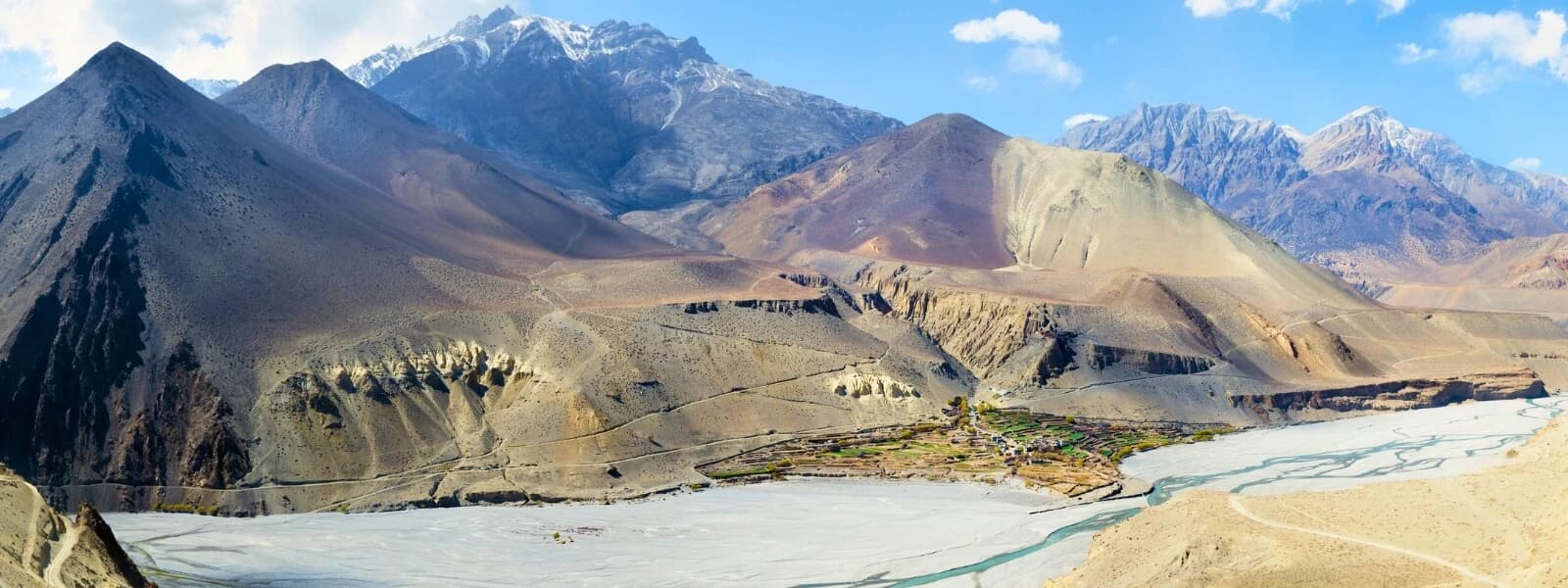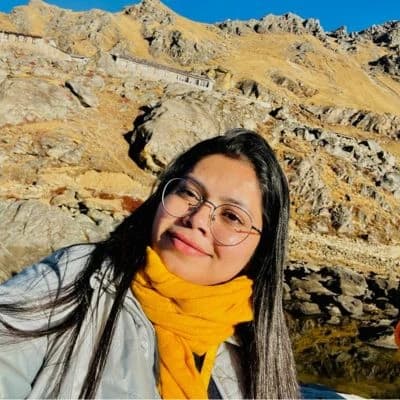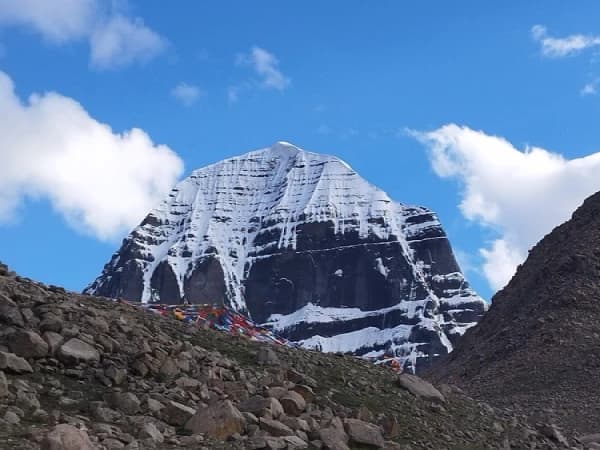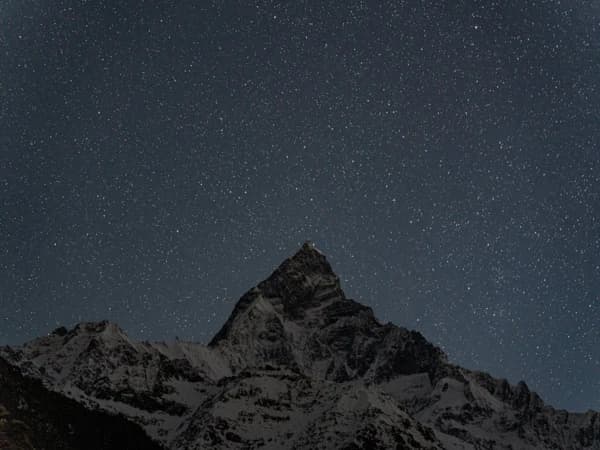"Trekking to Upper Mustang: Your Complete Guide to Permits and Regulations" is an in-depth guide that provides essential information on obtaining permits and navigating the regulations for trekking in Upper Mustang, Nepal. This guide covers the process of obtaining a trekking permit, including necessary documentation and fees, as well as providing information on local regulations and restrictions that trekkers should be aware of. The guide also offers advice on preparing for the trek, such as obtaining travel insurance and familiarizing yourself with local customs and culture. Overall, this comprehensive guide aims to make the permit process for Upper Mustang Trek as smooth and stress-free as possible, so that trekkers can focus on enjoying the stunning scenery and unique culture of this beautiful region of Nepal.
"Trekking to Upper Mustang : Your Complete Guide to Permits and Regulations"
Overview of Upper Mustang

Upper Mustang, a distinctive and remote area of Nepal's Mustang district, provides a window into the traditional Tibetan culture and way of life. The area is well-known for its stunning scenery, historic monasteries, and a way of life that has remained mostly unchanged. However, a unique permit is necessary to visit Upper Mustang due to its isolated location and limited access. Everything you need to know about obtaining Upper Mustang hiking permits will be covered in this blog.
Why is it important to obtain a trekking permit to Upper Mustang?
Getting a trekking permit is a critical step in planning a successful and safe journey to Upper Mustang, Nepal. It is not only mandated by law, but it also contributes to the preservation of the local ecology and cultural history. The permission process serves to control the number of trekkers in the area and guarantees that the required precautions are taken to reduce the impact of tourism on the environment. Furthermore, possessing a valid trekking permit can make it easier to gain access to particular regions and facilities, such as lodging and local transportation. Trekkers can help to conserve the beauty and uniqueness of Upper Mustang for future generations to enjoy by obtaining a trekking permit.
What is a Upper Mustang Trekking Permit?
Upper Mustang is a restricted location that requires a special authorization to visit. The permission is given by the Nepalese government and is required for entry into the territory as well as trekking in the area. The permit is valid for a set length of time and number of days.
How to Obtain the Permit?

Applying for an Upper Mustang Trekking Permit is relatively straightforward. Permits can be applied for at the Immigration Department in Kathmandu or at the Annapurna Conservation Area Permit (ACAP) office in Pokhara. You will need to provide a copy of your passport, two passport photos and pay an authorization fee. Permit fees are currently $500 for the first 10 days and $50 for each day after that. It is also important to note that permit fees are non-refundable.
Applying for the permission through a trekking organization is an additional option. Once you get to Kathmandu or Pokhara, they will take care of all the paperwork and have the permission ready for you to pick up.
What are the Restrictions?
The Upper Mustang trekking permit is only valid for the specific period and number of days specified on the permit. It is not possible to extend the permit once you are in the region, so it is important to plan your itinerary accordingly. Additionally, the permit is only valid for the Upper Mustang region and is not valid for other restricted areas such as Dolpo or Tsum Valley.
It is crucial to plan your trip well in advance and to reserve your permit as early as possible because the permit also places restrictions on the number of tourists who are permitted to access the area at any one time.
Cost & Permits Required For Upper Mustang Trek
1. Restricted Area Permit for Upper Mustang
A Restricted Area Permit (RAP) is required for trekkers to enter the Upper Mustang region in Nepal. This is because Upper Mustang is located near the Tibetan border and the government of Nepal has designated it as a restricted area for security and tourism control. The RAP covers the areas of Lo Manthang Rural Municipality, Lo-Gekar Damodar Kunda Rural Municipality and Baragung Mukti Chetra Rural Municipality. The permit is mandatory to show at the entry point of Chele.
It's crucial to remember that the RAP may only be acquired from a local trekking company that has been authorized and registered by the government. The price of the permit varies according to how long you intend to spend in the Upper Mustang trekking trail's restricted areas. Foreign visitors must pay $500 per person for the first ten days and an additional $50 each day. Nepalese nationals are granted free entry to the area.
2. Annapurna Conservation Area Project
In addition to the Restricted Area Permit (RAP), trekkers to Upper Mustang are also required to obtain an Annapurna Conservation Area Project (ACAP) permit. This is because the trekking trail passes through the Annapurna conservation area, which encompasses the entire Mustang region. The proceeds from the permit fee are used for the protection of the local flora and fauna and for the development of trails in the Annapurna region.
The cost of the ACAP permit varies depending on the nationality of the trekker. For SAARC (South Asian Association for Regional Cooperation) nationals, the fee is NRs. 1000 per person (approximately US$10), while for other nationals, the fee is NRs. 3000 per person (approximately US$30).
What documents do you need to obtain Upper Mustang Trekking Permit?
- A copy of your passport
- Two passport-size photos
- A completed permit application form
- Payment for the permit fee
- If you are applying through a trekking agency, they will require a copy of their TIMS card and the company registration certificate.
- If you are trekking with a guide or porter, you will need to provide their passport details and a copy of their work permit.
- If you are traveling in a group, the agency will require a list of all group members and their passport details.
- Itinerary for the trek, including the number of days you plan to spend in the restricted area.
It's important to remember that you must collect the necessary paperwork and permits before flying to Nepal and carry them with you while you're there. The dates and times specified on the permits are the only times they are valid, so be sure to plan your trip carefully and reserve your permit well in advance.
Upper Mustang Trekking Permits Terms And Conditions
- The Restricted Area Permit (RAP) and Annapurna Conservation Area Permit (ACAP) are mandatory for trekking in the Upper Mustang region.
- The RAP can only be obtained through a government-registered, licensed local trekking agency.
- The RAP is valid for a specific period and number of days as specified on the permit. It is not possible to extend the permit once you are in the region.
- The RAP fee is non-refundable and the cost varies depending on the number of days you plan to spend in the restricted area.
- The ACAP permit is required because the trekking trail passes through the Annapurna conservation area, and the proceeds from the permit fee are used for the protection of the local flora and fauna and for the development of trails in the Annapurna region.
- The cost of the ACAP permit varies depending on the nationality of the trekker.
- All necessary documents and permits should be obtained before departing for Nepal and should be carried with you during the trek.
- It is important to plan your itinerary and book your permit well in advance.
- Trekkers must adhere to the terms and conditions of the permit, including any rules and regulations set by the local authorities and the conservation area management.
- The trekkers are responsible to follow the Leave No Trace principle, and respect the local culture, tradition, and environment of the region.
- Failure to comply with these terms and conditions may result in fines or expulsion from the restricted area.
How can you be prepared for the Upper Mustang Trek?

For a succesfull Upper Mustang trek you have to keep the following things in the consideration,
A. Travel insurance - Any trekker should have a complete travel insurance package, especially if they're going to a remote location like Upper Mustang. Medical crises, evacuations, itinerary changes, and other unforeseen circumstances should all be covered by your insurance.
B. Physical preparedness and training—The Upper Mustang Trek can be physically taxing, particularly at altitude. It's crucial to start preparing far in advance and to progressively step up your physical activity in the weeks before the walk. Take some time to adjust to the altitude and get your body ready for the physical demands of the trek.
C. Clothing and gear recommendations - Proper clothing and gear can make a big difference in the comfort and success of your trek. Be sure to pack layers that are suitable for changing weather conditions, as well as a good pair of hiking boots, a hat, sunglasses, and sunblock. A detailed packing list can be found online or from your trekking agency.
D. Local customs and culture - Upper Mustang is home to a unique and fascinating culture, and respecting local customs is an important part of traveling there. This includes understanding local dress codes, religious beliefs, and customs around food and hospitality. A little bit of research and cultural sensitivity can go a long way in making your trek a positive and respectful experience for both you and the local community.
E. Language and communication - While English is widely spoken in the tourist areas of Nepal, it may not be as commonly used in Upper Mustang. Consider learning a few basic phrases in Nepali or Tibetan to help communicate with local people and make your trek a more enjoyable and fulfilling experience. Having a guide who speaks the local language can also be extremely helpful in navigating the trek and communicating with locals.
Frequently Asked Questions For Upper Mustang Trekking Permit (FAQs)
How do I get an Upper Mustang trekking permit?
The permit can be obtained from the Department of Immigration in Kathmandu or from the Annapurna Conservation Area Permit (ACAP) office in Pokhara. You will need to submit a copy of your passport, two passport-size photos, and pay the permit fee. You can also apply for the permit through a trekking agency.
How much does the Upper Mustang trekking permit cost?
The cost of the permit is $500 for the first 10 days and $50 for each additional day for foreigners. Nepali nationals are allowed to enter the region for free. The cost of the ACAP permit is NRs. 1000 per person for SAARC nationals, and NRs. 3000 per person for other nationals.
Is it possible to extend the permit once I am in the region?
No, the permit is valid for the specific period and number of days specified on the permit, and it is not possible to extend the permit once you are in the region.
Can I get a refund if I don't use the permit?
No, the permit fee is non-refundable.
Is it necessary to have a guide or porter to trek in Upper Mustang?
While it is not mandatory, it is highly recommended to trek with a guide or porter, as they are familiar with the region and the permit requirements.
Are there any restrictions on the number of tourists that are allowed to visit the region?
Yes, the permit has a restriction on the number of tourists that are allowed to visit the region at any given time. It is important to plan your trip well in advance
Conclusion
A. Final thoughts on the permit process
Obtaining a permit to trek in Upper Mustang can seem like a daunting task, but with the right information and preparation, it can be a straightforward and enjoyable process. It's important to remember that the permit process is in place to protect the local environment and cultural heritage, and by obtaining a permit, you can be part of the solution in preserving this unique and beautiful region for future generations to enjoy.
B. Encouragement to start planning your Upper Mustang Trek
Upper Mustang is a truly special and unforgettable place, and the permit process is just one part of the journey. With the right preparation and mindset, you can have the adventure of a lifetime in this beautiful region of Nepal. So don't let the permit process hold you back - start planning your Upper Mustang Trek todHow to Obtain Upper Mustang Trek Permits ?






